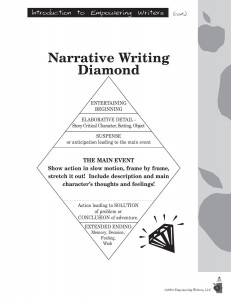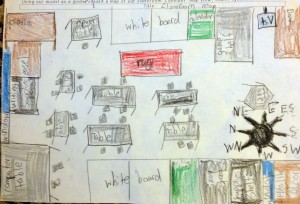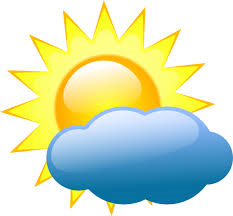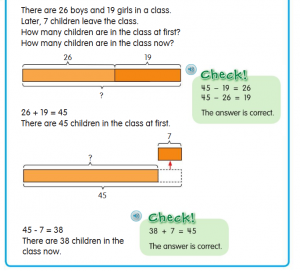Posted by kavery508 | Posted in Uncategorized | Posted on December 7, 2015
![images[5]](https://mraverysclass.edublogs.org/files/2013/12/images5-2fut9c3-300x106.jpg) I have started a marble jar in class for earning points toward a celebration before the holidays. I’m looking to encourage habits of mind and social skills, namely: 1) Get started on work right away and work the whole time 2) Cooperate with kids and adults 3) Return math and reading homework on time. Each day the kids will evaluate themselves with my help, and marbles will be added for each accomplishment, helping us reach our goal. Thank you for the wonderful work so many of you do to make sure #3 happens–it’s really making a difference in your child’s learning!
I have started a marble jar in class for earning points toward a celebration before the holidays. I’m looking to encourage habits of mind and social skills, namely: 1) Get started on work right away and work the whole time 2) Cooperate with kids and adults 3) Return math and reading homework on time. Each day the kids will evaluate themselves with my help, and marbles will be added for each accomplishment, helping us reach our goal. Thank you for the wonderful work so many of you do to make sure #3 happens–it’s really making a difference in your child’s learning!
Our celebration will be on Wednesday, December 23rd. Kids in our class will be invited to wear pajamas at school (more on the details to come), and we will spend the day honoring each other’s accomplishments so far. In addition, we’ll have a winter sing-a-long, write a narrative to accompany Raymond Brigg’s The Snowman, and more!
 This week we will wrap up our introduction to bar models. The big idea of bar modeling is for students to think logically and deeply about problems and to create bar models that a) help to organize information, b) help to make sense of the problem, and c) help to solve the problem. What’s different this week is that the problems will have more than one step needed to get to the answer. Consider this problem from the MIF student book:
This week we will wrap up our introduction to bar models. The big idea of bar modeling is for students to think logically and deeply about problems and to create bar models that a) help to organize information, b) help to make sense of the problem, and c) help to solve the problem. What’s different this week is that the problems will have more than one step needed to get to the answer. Consider this problem from the MIF student book:
Notice how each step of the problem is broken down, modeled, and solved in a logical order. Kids should be doing the same when encountering multi-step problems like this: reading, thinking, modeling part 1; then repeating the process for part 2. We’ll be using problems like this with increasing frequency in future.
After the test on Chapter 4, we’ll dive into multiplication. What’s important for kids to know is that multiplication means repeated addition of equal groups. Therefore they are encouraged to write and show their work using addition as well as by writing multiplication sentences. Remember you can access the student book anytime (via the Think Central link above) to see how the kids are being taught to understand math concepts.
 We will spend the first part of this trimester learning the elements of narrative writing in greater depth than before. This week we will learn what good description sounds like and how to modify nouns with elaborative detail that puts the reader in the picture. Kids will create descriptive paragraphs that bring to life the jack-o-lanterns made on Fall Festival; a basketball game on the blacktop; and a winter setting. Consider the difference between these two descriptions: 1) My jack-o-lantern is orange. It has heart nose. It has two eyes. 2) I was surprised to see the tall, orange jack-o-lantern. Looking closely, I noticed a small, pink, heart-shaped nose. It was impossible to miss its sparkling blue eyes, like jewels. Elaboration is fun, though it can be hard for kids at first. Try playing games that encourage your child to make use of adjectives, such as them describing a favorite toy or holiday decoration while someone in the other room listens; asks questions to elicit description; and tries to guess what it is.
We will spend the first part of this trimester learning the elements of narrative writing in greater depth than before. This week we will learn what good description sounds like and how to modify nouns with elaborative detail that puts the reader in the picture. Kids will create descriptive paragraphs that bring to life the jack-o-lanterns made on Fall Festival; a basketball game on the blacktop; and a winter setting. Consider the difference between these two descriptions: 1) My jack-o-lantern is orange. It has heart nose. It has two eyes. 2) I was surprised to see the tall, orange jack-o-lantern. Looking closely, I noticed a small, pink, heart-shaped nose. It was impossible to miss its sparkling blue eyes, like jewels. Elaboration is fun, though it can be hard for kids at first. Try playing games that encourage your child to make use of adjectives, such as them describing a favorite toy or holiday decoration while someone in the other room listens; asks questions to elicit description; and tries to guess what it is.
 In Social Studies, we apply our knowledge of scale, orientation, symbols, labels, and view when creating classroom maps. Check out the example above: notice how the places in the classroom are draw to relative scale, with the center of the room in the center of the map (orientation). The view is an appropriate combination of map view and bird’s eye view, and objects/places are symbolic (e.g. just a shape) and labeled. The compass rose is placed correctly to show position and is labeled, too. At home, kids can create similar maps of places important to them, then bring them in to show us!
In Social Studies, we apply our knowledge of scale, orientation, symbols, labels, and view when creating classroom maps. Check out the example above: notice how the places in the classroom are draw to relative scale, with the center of the room in the center of the map (orientation). The view is an appropriate combination of map view and bird’s eye view, and objects/places are symbolic (e.g. just a shape) and labeled. The compass rose is placed correctly to show position and is labeled, too. At home, kids can create similar maps of places important to them, then bring them in to show us!
 Our science focus this term is on earth science, specifically weather. Our guiding questions: What is weather, and how does it affect the earth and us? How can weather be measured? How does recognizing patterns in weather help us predict it? How does the sun affect weather and the earth? We will begin by evaluating methods for recording temperature and learning to read a variety of thermometers. Here’s a link to the FOSS weather unit page, used by teachers in the district: http://lhsfoss.org/scope/folio/html/AirandWeather/1.html. A quick web search will present you with lots of kid-friendly sites such as these, which we will use in class:
Our science focus this term is on earth science, specifically weather. Our guiding questions: What is weather, and how does it affect the earth and us? How can weather be measured? How does recognizing patterns in weather help us predict it? How does the sun affect weather and the earth? We will begin by evaluating methods for recording temperature and learning to read a variety of thermometers. Here’s a link to the FOSS weather unit page, used by teachers in the district: http://lhsfoss.org/scope/folio/html/AirandWeather/1.html. A quick web search will present you with lots of kid-friendly sites such as these, which we will use in class:
http://eo.ucar.edu/webweather/
http://www.weatherwizkids.com/


